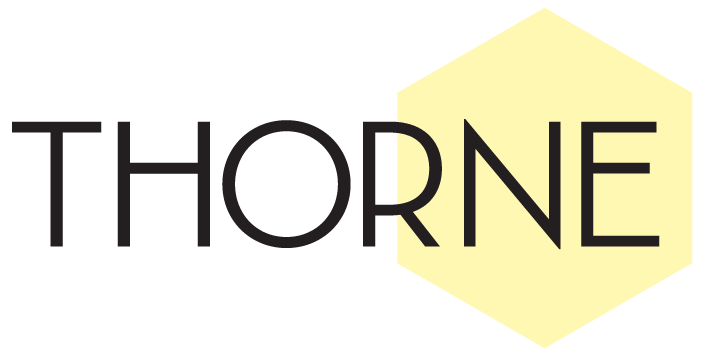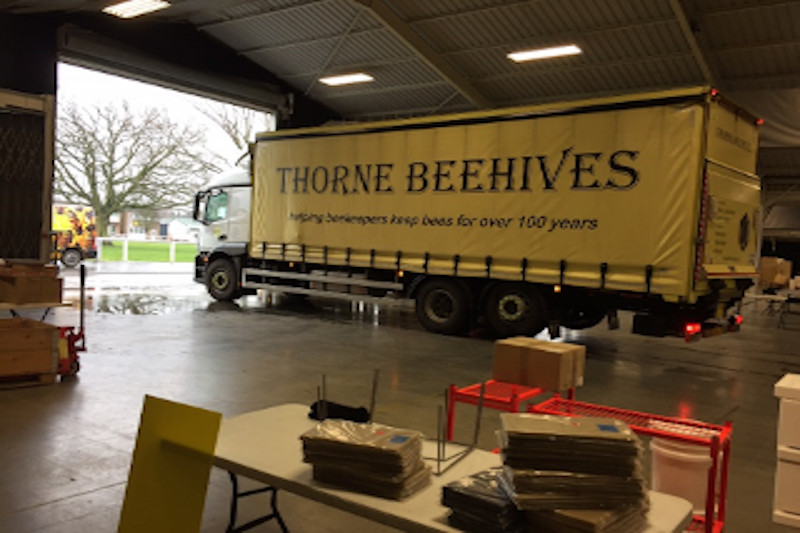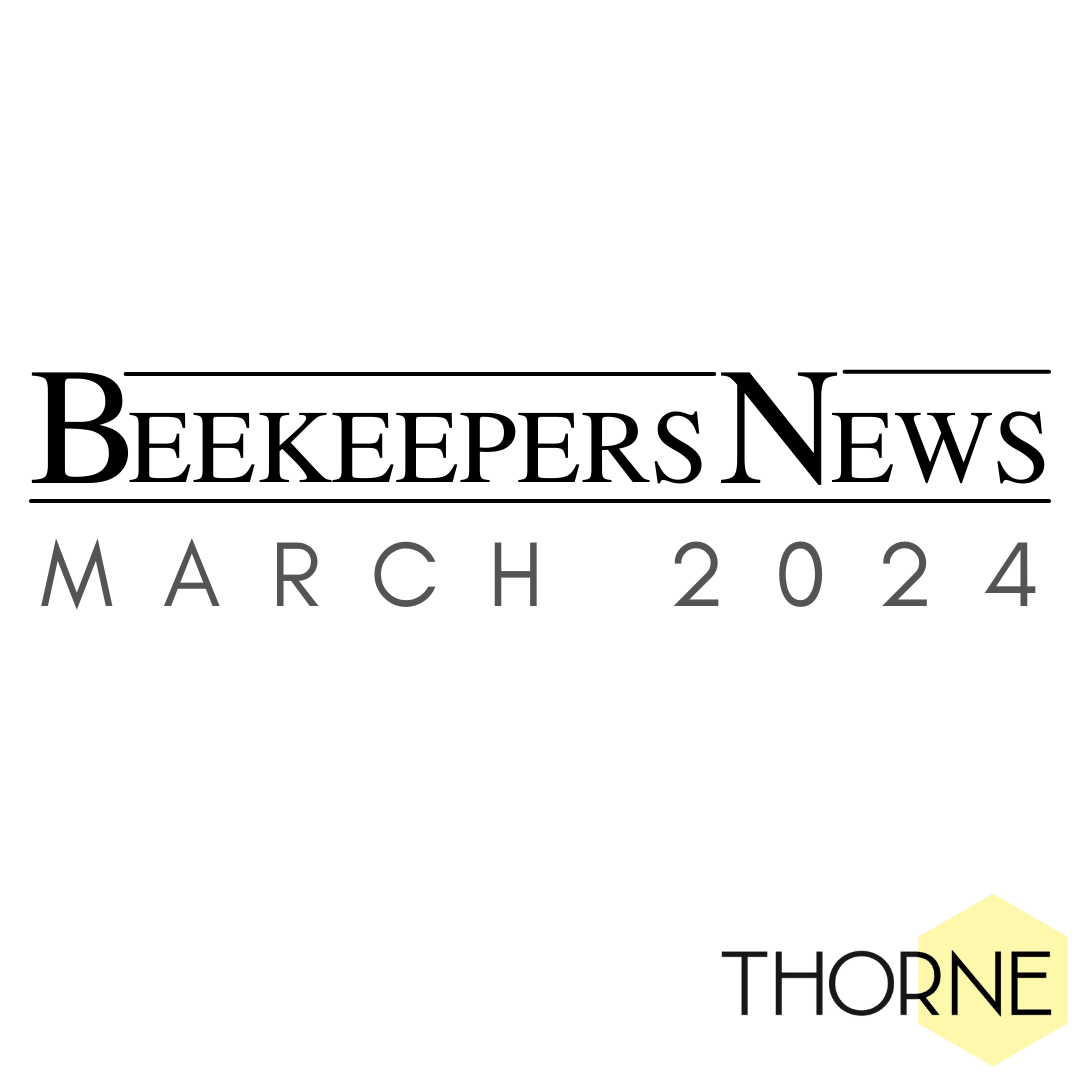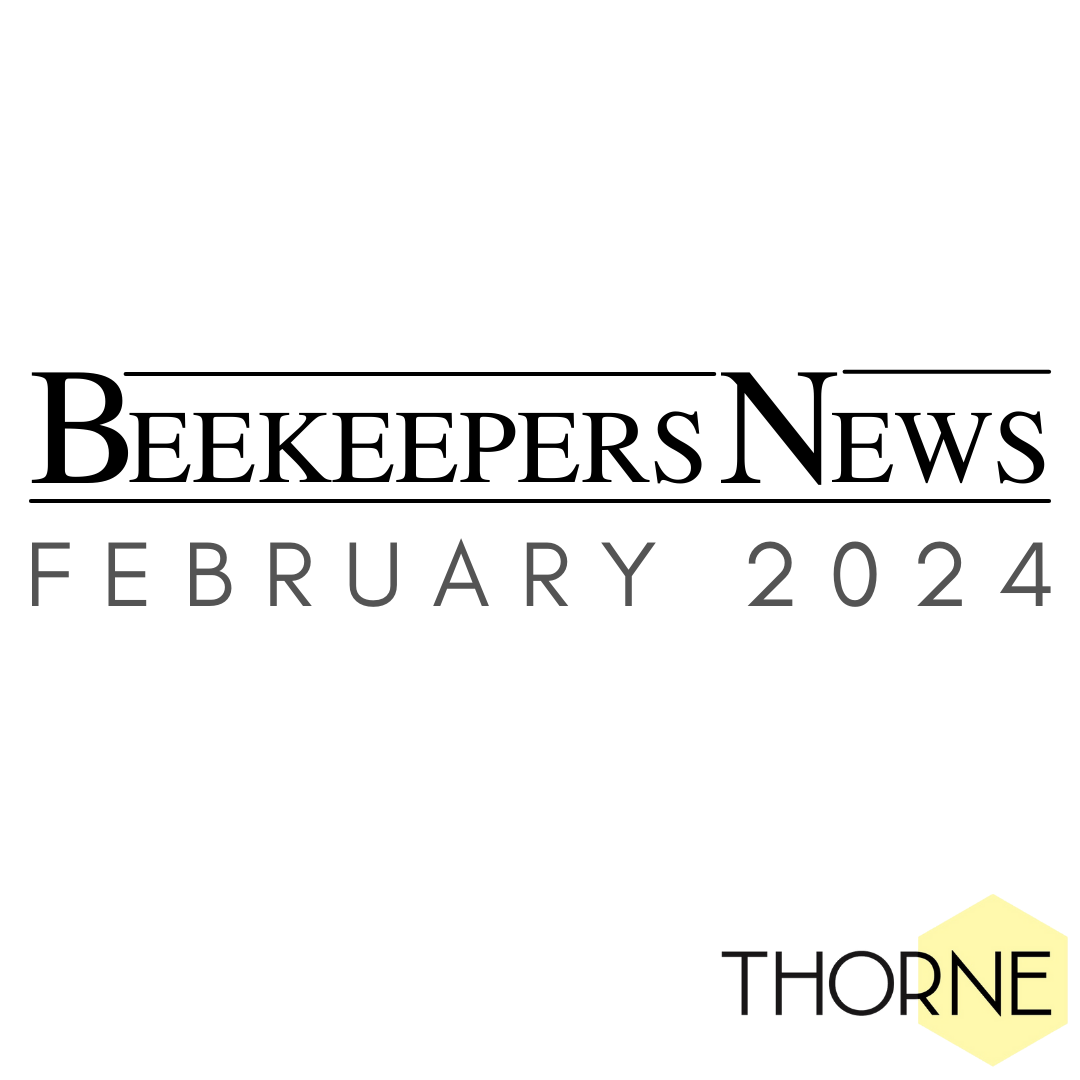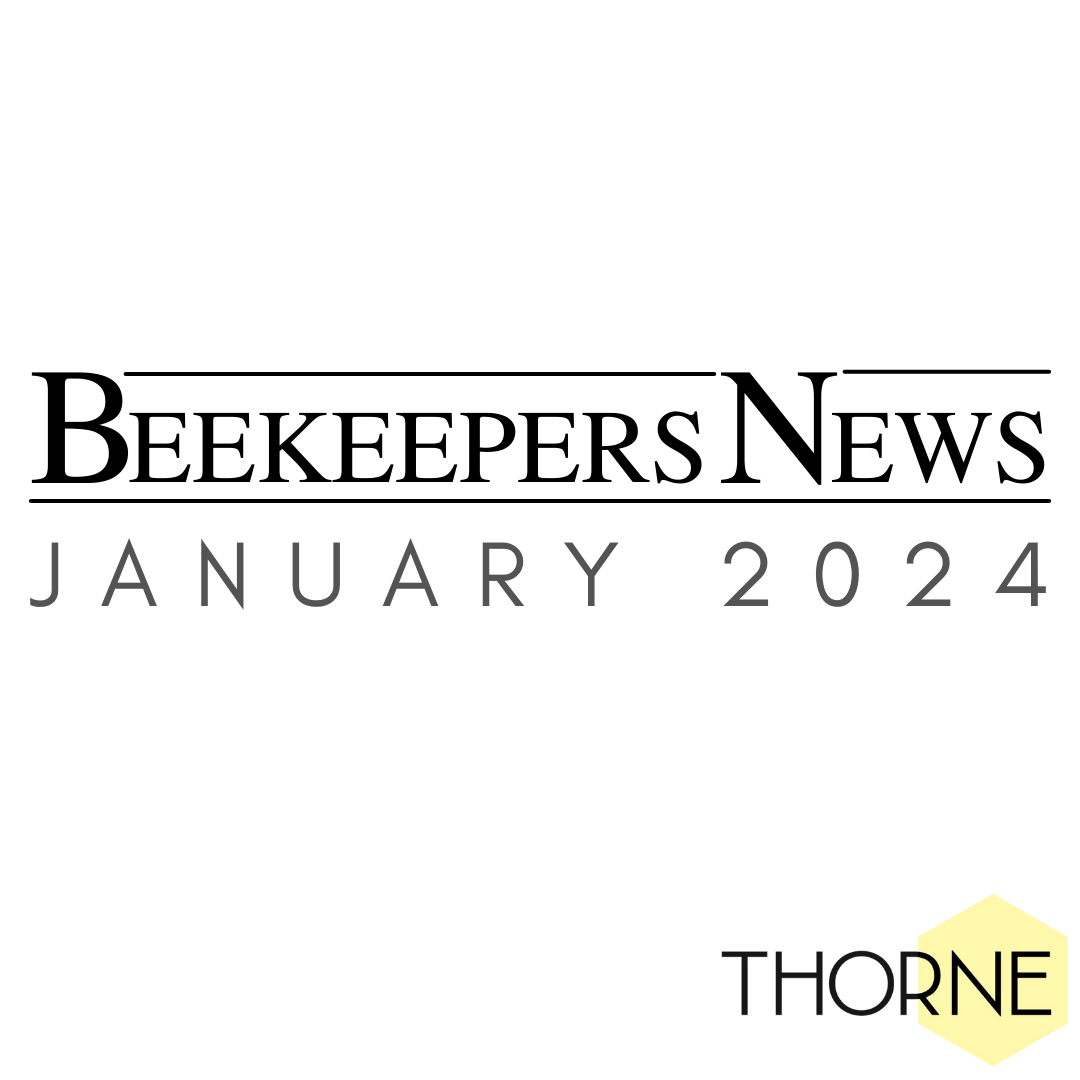The season really begins in earnest in March, and in addition to our normal internet and phone orders we also attend several beekeeping shows - Bee Tradex, the Ulster Convention and the Welsh Beekeepers Spring Convention. Many of our staff work hard behind the scenes preparing for these shows and carefully picking and packing your orders. Of course, then the stock also has to be put away before being prepared for the next show!! The pictures show our lorry leaving Bee Tradex before we have assembled the stand, and the finished display on Saturday morning before the rush began!

Equipment Focus………
All our hives are made from either Canadian, or British, Western Red Cedar. They do not need treating and will give your bees a happy home for many many years. However if you would like to brighten up your hives and prevent the wood from silvering and fading why not try our Beehive Wood Stain.

This wood stain is truly 100% water based, zero VOC, non-toxic, odour free and ecologically friendly. It uses advanced micronized water soluble pigments with amazing, outstanding performance. Guaranteed not to crack or peel.
Developed specifically for beehives, it is safe to use inside and out, with peace of mind that there are no toxic chemicals to harm you, your bees, or the environment.
The stain penetrates deep into the wood and binds to the wood fibres, offering deep down protection. The semi-transparent qualities enhance the wood grain leaving a beautiful natural finish lasting many years.
Wood must be clean, free of paint, varnish or sealant and be in good condition. The stain dries fast in 1 - 2 hours and is available in a range of colours and two sizes of bottle.
The 473ml bottle covers approximately 2 hives and the 946ml bottle will stain approximately 4 hives.
https://www.thorne.co.uk/hives-and-bees/beehive-protection
Ask our Expert
Please email us at sales@thorne.co.uk if you have a question for our experts.
Something slightly different this month. We are always being asked how we process and manufacture our beeswax foundation. This should answer some of your questions.
In 1965 we bought our first wax plant and started to make our own foundation. Lesley Thorne collected one ribboning machine and one embossing machine from Germany. On a purpose built trailer behind his favourite Jaguar.
It is all very well buying the machinery, but making them work for you is another matter! Besides the machines we needed steam jacketed pans to melt the wax and a steam boiler to provide the fuel. This was quite an expense in itself. We were lucky enough at the time to employ two respected and experienced beekeepers, who were also pretty useful with machinery. Arthur Adams and Bernard Mobus (on the left in the picture, who also designed the Mobile Nuc/Observation Hive). After a few weeks of burning the midnight oil we had our wax plant up and running.

The next big challenge was to get the wax wired. All wax in mainland Europe was sold unwired. We had seen how Lees of Uxbridge wired their foundation and thought we could improve on the system. Arthur Adams put his mind to it and developed our manual/electric wiring boards. All ten are still in use today.

Besides the original machines we have also invested heavily in semi-automatic wiring equipment. These electric machines run on compressed air, microprocessors and a great deal of ingenuity! We have two so far and are busy building a third in our own R & D workshop.

In 2010 when we moved from our Wragby site to Rand, two miles away, we were faced with the challenge of moving the wax plant without loss of production. By then, we had two embossing machines and it was obvious if we built up stock of flat beeswax ribbons we could make the move comparatively easily and this proved to be the case. We realised though that being so reliant on one ribbon machine was risky. If it broke down we could get months behind with production, so we invested in another ribbon machine. Since then we have also built ourselves another embossing machine (without buying from Germany!)

Our wax is now liquefied in powerful electric vats, 1500kgs at a time. Most of the time we clean the wax by simply floating it on water. By this simple and effective method of sedimentation it is possible to clear the wax of all solid debris. Nothing is added to our wax to change its colour, odour or consistency. What you see is what you get! Once liquid the clean wax is pumped through insulated hoses to two insulated holding tanks that feed the reservoirs of the Ribbon machines.

These machines turn the liquid beeswax in to a solid in the form of a 3mm thick and 460mm wide ribbon. The wax is rapidly cooled by pressurised, recycled chilled water running through the centre of the drum. The cooling wax is automatically scraped off the drum by a knife in the heated block and extruded through a narrow slot in the front of the machine. The ribbon is coiled up at the end of the machine via a sliding clutch mechanism. The 30kg. ribbons are now ready for embossing with the apis mellifera mellifera 5.4mm hexagonal cell shape. We also have rollers for drone base, apis mellifera scutellata 4.7mm (African honeybees) and 4.9mm small cell size.
We normally have three embossing machines running at any one time; one on Premier grade (mainly UK and Ireland sourced wax) and one on Standard grade (carefully sourced from a variety of countries) and the third processing sheets for thin super. The embossed cell of the latter is slightly different having far thinner walls and less wax per sheet. These machines run well if the ribbons are flat and true and the air temperature is not too oppressive. On very hot days however, and if the ribbons are not true, then they can be very challenging to run.

The machines are all fully adjustable to length and width of sheets and can be altered quite quickly. The weight must also be correct. You may occasionally find your sheets are a fraction longer, or shorter than you would like. This is down to the temperature at which it is milled. As temperatures rise, the sheets can become longer and as they reduce they can become shorter. We make frequent checks and, sometimes, it is necessary to adjust the machines to ensure everything is absolutely correct in weight and size.

We process well over 100 tonnes of beeswax per annum, mainly for beekeepers through our virtual or real shops but also Conversions and ‘Straight Swap’ at various exhibitions and shows. If you are interested in seeing the Wax Plant running we do arrange tours for interested groups and associations. There is also an opportunity to see the machines at our Rand Open Day.
Bees for Development Update – Bees and trees make progress in Ethiopia
Deforestation is a considerable problem across Amhara in northern Ethiopia.
In 2015 Bees for Development began, with the local administration, to restore one of the degraded hillsides. The main problem is over-grazing by livestock, so our first task was to gain agreement from the community to demarcate the area as a no-grazing zone.
Now, without constant browsing pressure from cattle, shrubs and trees are regenerating. Bees for Development Ethiopia planted 17,000 seedlings of Grevillea robusta, Cordia Africana, Acacia decrence and Croton macrostachis: these tree species provide excellent bee forage. The local community are supportive of the closure to grazing, however the new seedlings are very vulnerable. Therefore, we are paying two local farmers to ‘guard’ the seedlings as they become established. One of the guards, Andualen, is also a beekeeper. He explains that many of the re-generating shrubs are good bee plants. This project is now in its second year. So far, Andualen has perceived that his nearby bee colonies are getting stronger because of this improved forage.
The photos show the Seedling guard and beekeeper Andualen talking to project coordinator, Getsh and the Seedlings of Grevillea robusta- an excellent tree for bees.
You can support this valuable work here http://www.beesfordevelopment.org/give-a-donation/
A big thank you from everyone at Bees for Development’ for your generous donations.


National Honey Show News -something for everyone including the newer Beekeeper
There’s much for you at this Show. One thing about beekeepers is they love to talk and share their knowledge and enthusiasm. Among the superb selection of beekeeping equipment trade stands are information stands, books – you’ll be surprised how many there are on the subject of beekeeping - beekeeping publications, associations and more. The display of competitive entries is awesome, and you’ll see plenty of scope for entries from people with a variety of beekeeping and artistic skills. Alongside this, after a fortifying visit or two to the cafeteria, the programme of lectures offers an amazing variety of subjects to dip into throughout the three days. Saturday is our special day with a workshop, and a series of lectures of particular interest for those who have recently taken up the craft or are thinking of doing so: http://www.honeyshow.co.uk/lectures-and-workshops.php Do come along and find out what it’s all about, and to get the most from your visit, check the programme in the Schedule to plan your day(s).
The National Honey Show, 26 to 28 October 2017, Sandown Park Racecourse, Esher, KT10 9AJ www.honeyshow.co.uk
Upcoming Events
• BBKA Spring Convention, Harper Adams University, Newport – 7th and 8th April. We are now taking orders for collection at the convention.
• Saturday opening, 9am – 4pm, for our Stockbridge branch
• Saturday opening, 9am – 12 noon, for our Rand and Newburgh shops
